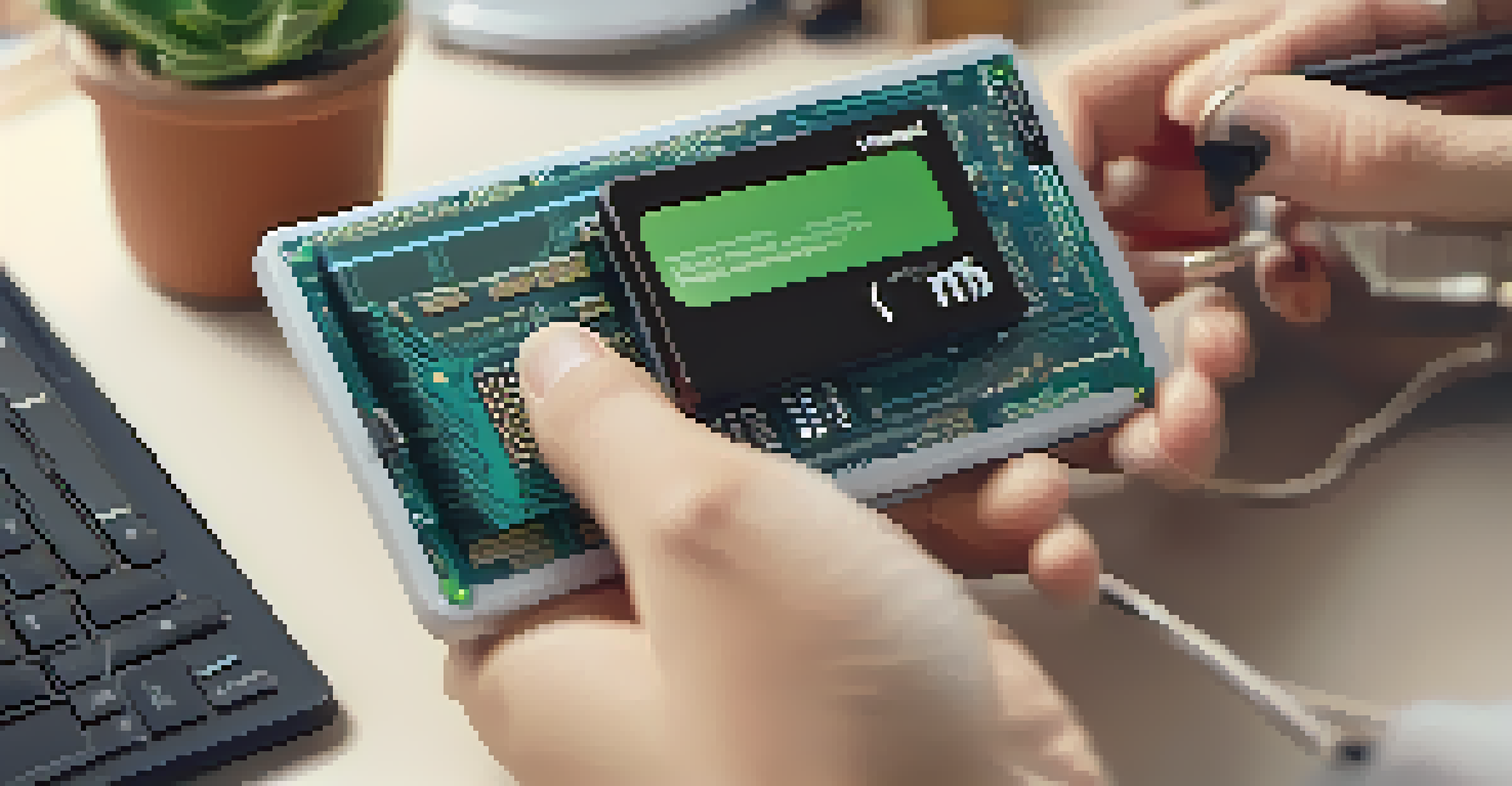Hardware Wallets: The Most Secure Option for Cryptos

What Are Hardware Wallets and How Do They Work?
Hardware wallets are physical devices designed to securely store your cryptocurrencies offline. Unlike software wallets that are connected to the internet, these devices keep your private keys safe from online threats. Think of a hardware wallet as a safe deposit box for your digital assets—only you have the key.
The only safe place for your keys is in your head, and even then, you should have a backup.
When you want to make a transaction, you connect the wallet to your computer or mobile device. The wallet signs the transaction without exposing your private keys to the internet, ensuring your assets remain secure. This makes hardware wallets one of the most secure options for managing your crypto holdings.
As a hardware wallet operates independently of any software, it significantly reduces the risk of hacking. With cyberattacks becoming increasingly sophisticated, the layered security of hardware wallets is a comforting advantage.
Why Security Matters in Cryptocurrency Storage
In the world of cryptocurrencies, security is paramount. Every day, hackers target exchanges and online wallets, stealing millions in digital assets. By understanding the risks involved, you can make informed decisions about how to protect your investments.

Cryptocurrencies operate on a decentralized network, which means there’s no central authority to turn to if something goes wrong. If you lose access to your crypto due to a hack or a forgotten password, it’s often irretrievable. This is why choosing a secure storage solution like a hardware wallet is crucial.
Hardware Wallets Enhance Security
Hardware wallets securely store cryptocurrencies offline, protecting private keys from online threats.
By opting for a hardware wallet, you're taking proactive steps to safeguard your investments. It’s not just about protecting your assets today; it’s about ensuring their security for the future.
Comparing Hardware Wallets to Other Wallet Types
When considering how to store your cryptocurrencies, you'll encounter various wallet types: software wallets, paper wallets, and hardware wallets. Software wallets are convenient but vulnerable to hacks, while paper wallets can be lost or damaged. Hardware wallets strike the perfect balance between security and usability.
In the world of cryptocurrencies, security is not just a feature; it’s a necessity.
Unlike software wallets that are constantly connected to the internet, hardware wallets store your keys offline. This offline capability is a significant advantage, as it makes it nearly impossible for remote attackers to access your funds. In essence, while software wallets may offer ease, hardware wallets prioritize safety.
Choosing the right wallet depends on your needs, but for long-term storage, many experts recommend hardware wallets. They provide peace of mind that your assets are protected, especially in a volatile market.
Top Hardware Wallets to Consider
Some of the most popular hardware wallets on the market include Ledger Nano S, Ledger Nano X, and Trezor Model T. Each of these devices offers unique features and varying price points, allowing you to choose one that fits your needs. Ledger devices, for instance, are known for their robust security and user-friendly interface.
Trezor Model T, on the other hand, boasts a touchscreen feature that makes it easy to navigate. It’s also highly regarded for its open-source software, allowing for increased transparency. Whichever wallet you choose, ensure it has a solid reputation and positive user reviews.
Choosing the Right Wallet Matters
Selecting a hardware wallet offers a balance of security and usability, making it ideal for long-term storage.
Researching different models can help you find the wallet that suits your preferences. Keep in mind that investing in a hardware wallet is an investment in your financial security.
Setting Up Your Hardware Wallet: A Step-by-Step Guide
Setting up a hardware wallet is typically straightforward and user-friendly. First, you'll need to connect your hardware wallet to your computer or mobile device via USB or Bluetooth. Follow the on-screen instructions to initialize your device and create a secure PIN.
Next, you’ll generate a recovery seed phrase, which consists of 12 to 24 words. This phrase is crucial for recovering your wallet if it’s lost or damaged, so store it in a safe place—physically disconnected from your device. Remember, anyone with access to this seed phrase can access your funds.
Once your wallet is set up, you can start sending and receiving cryptocurrencies. Regularly back up your wallet and keep your firmware updated to ensure you benefit from the latest security features.
Best Practices for Using a Hardware Wallet
While hardware wallets offer excellent security, it's essential to adopt best practices for optimal protection. Always purchase your hardware wallet directly from the manufacturer or an authorized retailer to avoid tampering. Using a compromised device could put your crypto assets at risk.
Additionally, ensure you keep your recovery seed phrase in a secure location, separate from your wallet. If something were to happen to your device, having this phrase will allow you to regain access to your funds. Consider using a fireproof or waterproof safe for extra security.
Best Practices Ensure Protection
To maximize security, always buy from authorized retailers, securely store recovery phrases, and regularly update your wallet.
Finally, remember to regularly update your wallet’s software. Manufacturers frequently release updates to patch vulnerabilities and improve security, so staying up-to-date is crucial.
Common Misconceptions About Hardware Wallets
Many people believe that hardware wallets are only for tech-savvy users, but that's simply not true. Most devices are designed with the average person in mind, featuring easy setup guides and intuitive interfaces. You don’t need to be a blockchain expert to use a hardware wallet successfully.
Another misconception is that hardware wallets are completely immune to attacks. While they provide a higher level of security than other wallet types, no system is entirely foolproof. However, the risk is significantly minimized when compared to software wallets.

Understanding these misconceptions can help demystify the use of hardware wallets. When you approach them with realistic expectations, you'll feel more confident in securing your digital assets.